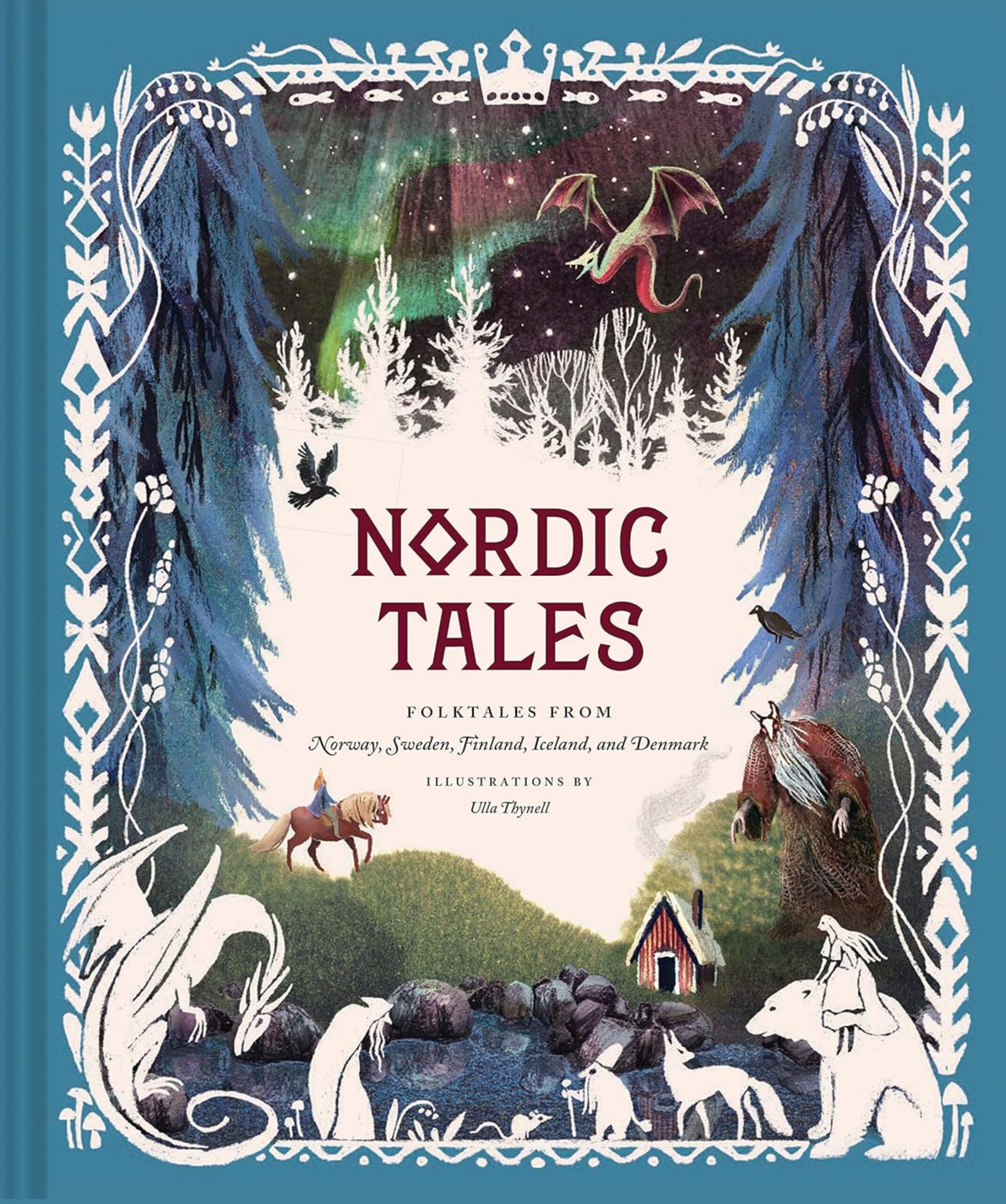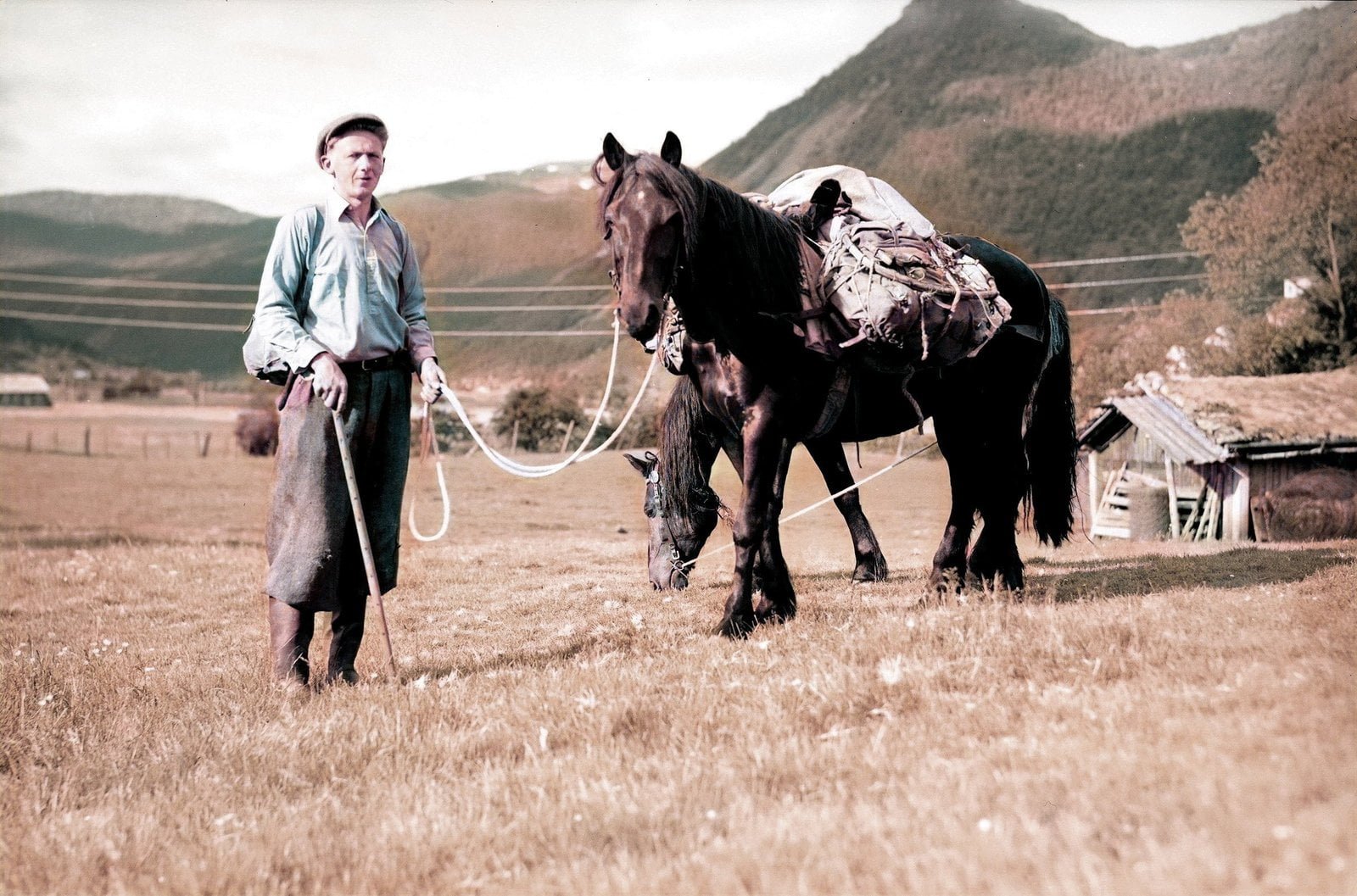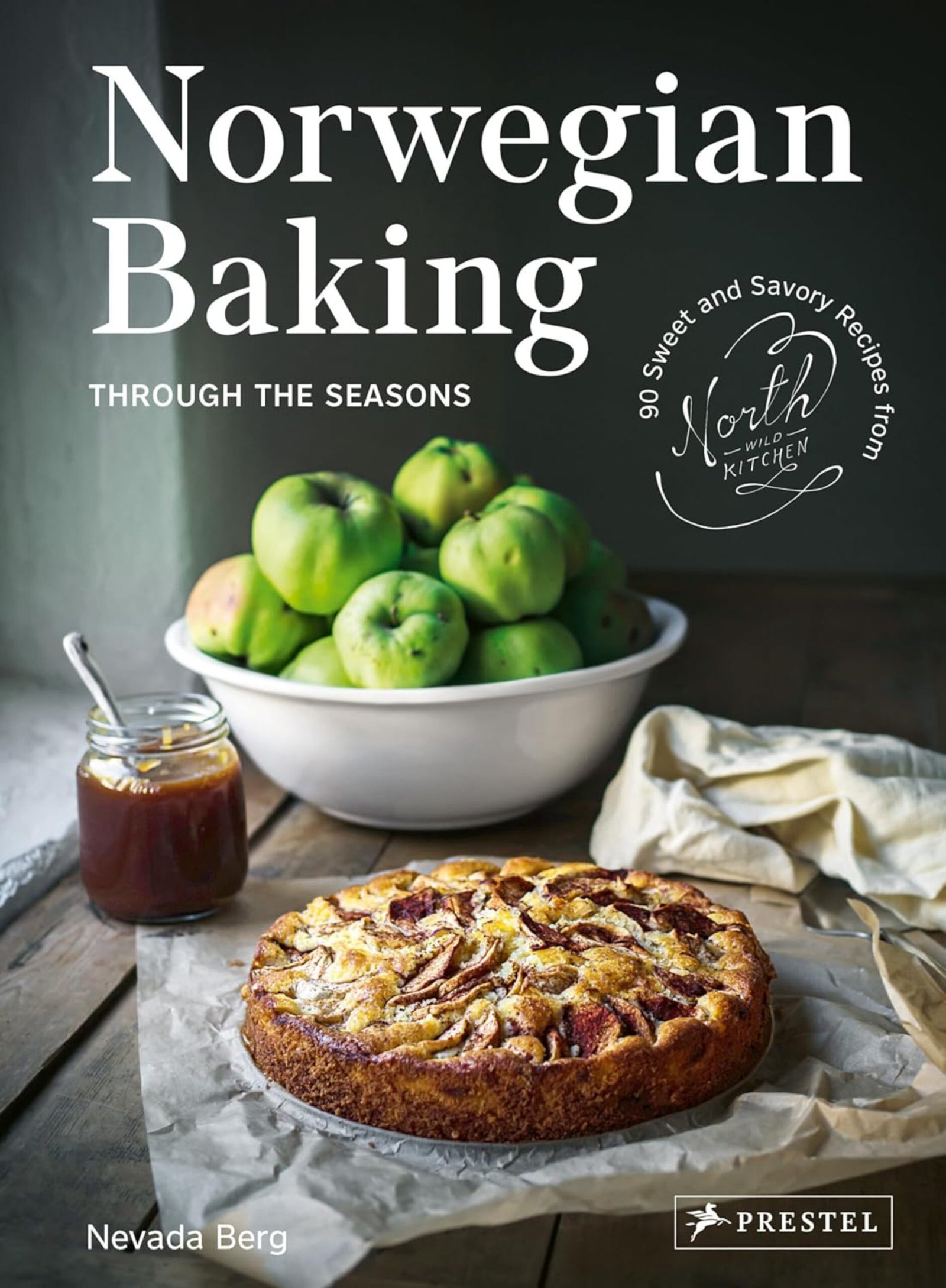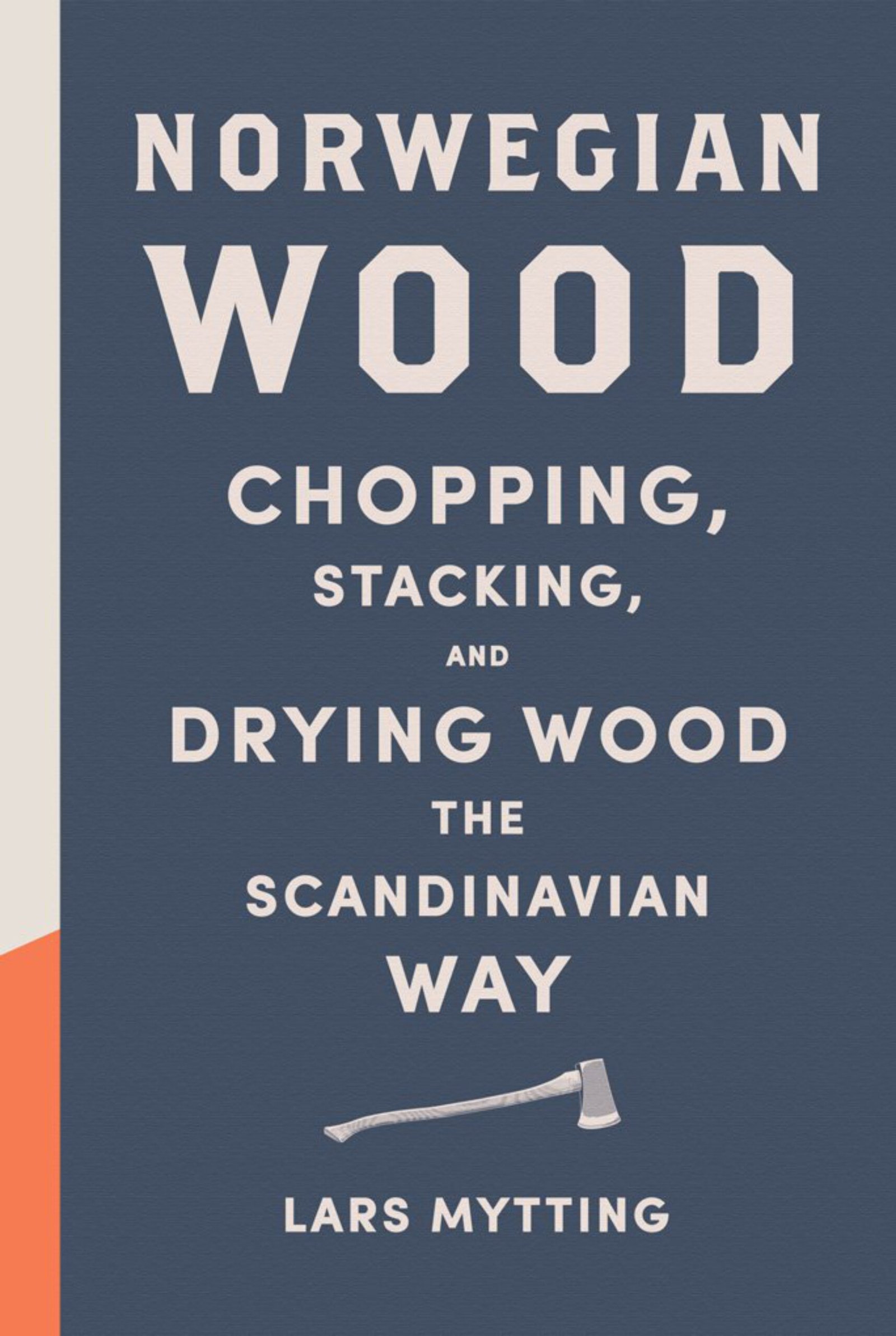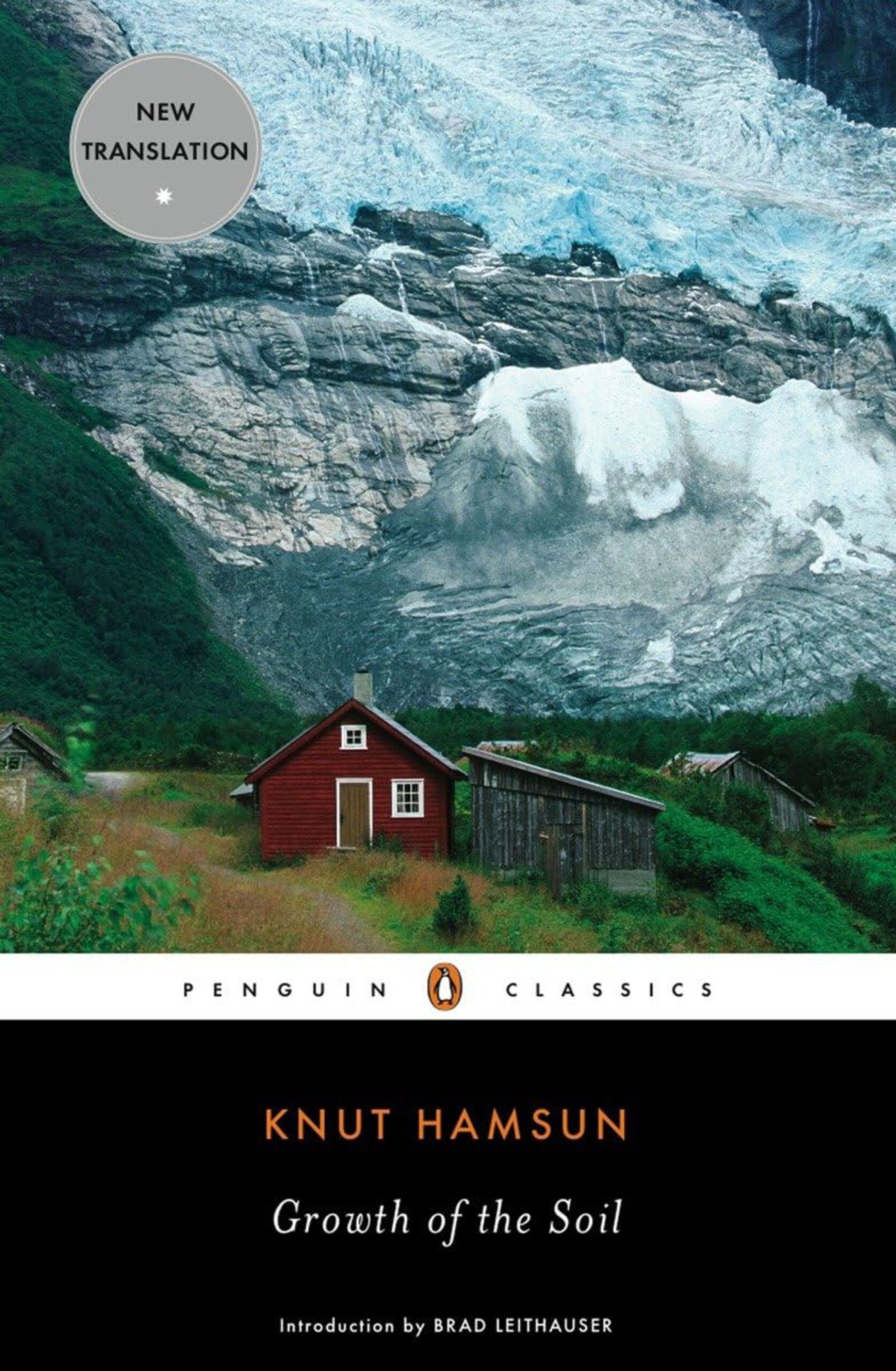Pronunciation
The grammar
A compound word made up of: kløv + hest | noun | masculine | the indefinite form: en kløvhest (a kløvhest) | the definite form: kløvhesten (the kløvhest).
What does the word mean?
Kløv: means in this context cleft, referring to the upside-down V-shape of the goods transported on a horse’s back. The word kløv is also used about the actual goods strapped to the packsaddle. The word kløv can also be attached to the words for reindeer and dog, to describe when these two animals are used to carry goods: kløvrein and kløvhund.
Hest: means a horse.
Kløvhest: means a packhorse.
Similar or related words
Kløvsal: means a packsaddle.
Kløvmeis: means a basket attached to the packsaddle, usually one on either side of the horse’s back.
Pakkhest: means the same thing as a kløvhest, but is rarely used when describing the traditional use of packhorses in Norway. The word is, however, almost always used when describing the use of packhorses outside Norway, for example in an old western novel.
More on the historical context
A challenging landscape
Norway is a land full of mountains, forests, valleys, fjords, rivers, and lakes. It was always a tough terrain to travel through. In historical times, a large portion of the population lived along the coastline and by the fjords, and used the boat as their main means of transportation. Inland, there were very few roads to speak of, and people moved through the challenging landscape using ancient, narrow, and often steep paths.
The horse and the reindeer
The Norse population used the domesticated horse to help them transport their goods; the Sami population mainly used the reindeer.
The seasonal summer farm
The modern-day Norwegians often associate the kløvhest with the traditional and seasonal summer pasture farms – the seters, often located in roadless mountain or forest areas. The livestock was sent off to the seter all summer. At regular intervals, someone from the home farm travelled back and forth with their kløvhest to collect butter and cheese – made by the milkmaid from the cow’s and the goat’s milk.
Off to the market
The kløvhest was also used when transporting goods to and from the market, to bring the prey back from a hunt, and so much more.
Examples from books and stories
Olav G. Holen Ferdavegane i Bykleområdet og dei viktigaste vegane til og frå øvre Setesdal 1968
→ Derifrå kunne dei fare beint opp Austmannskardet og vidare til Torvevarden, men der er så urlendt at dei kom ikkje fram med krøtur og kløvhest.
→ From there, they could travel straight up Austmannskardet and on to Torvevarden, but there the rock-strewn and steep landscape made it impossible to cross with cattle or kløvhest.
Nils Jarmann Hesten var nødvendig 1989
→ Før kjøreveienes tid kjørte folk likkiste på slep eller slede. Det hendte to hester bar kisten på båre, eller en enkelt kløvhest gikk med den døde uten kiste. I siste fall ble liket gjort fast til et nåbrett, som det hette på Voss, likbrett i Tingvoll (Hordaland).
→ Before there were any roads, people transported the coffins with the dead either using a travois or a sledge. Sometimes two horses carried the coffin like a stretcher between them, or one single kløvhest carried the deceased without a coffin. In this instance, the deceased was strapped to a wooden board, which again was strapped to the horse’s back.
Sources: Nasjonalbiblioteket nb.no | Einar Haugen’s Norwegian-English dictionary | Det Norske Akademis ordbok | Bokmålsordboka and Nynorskordboka.
